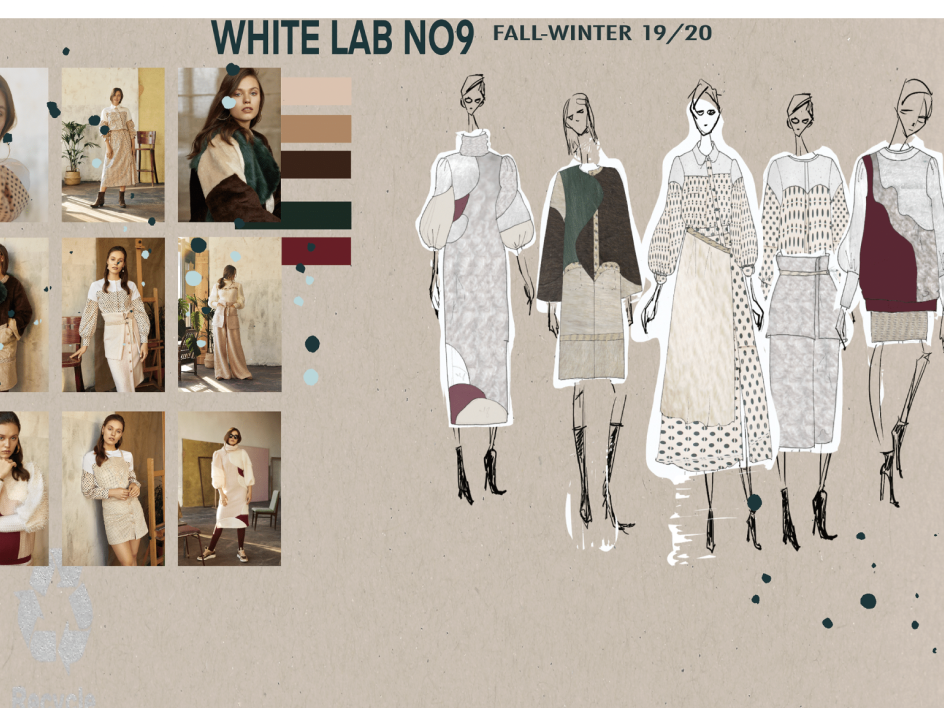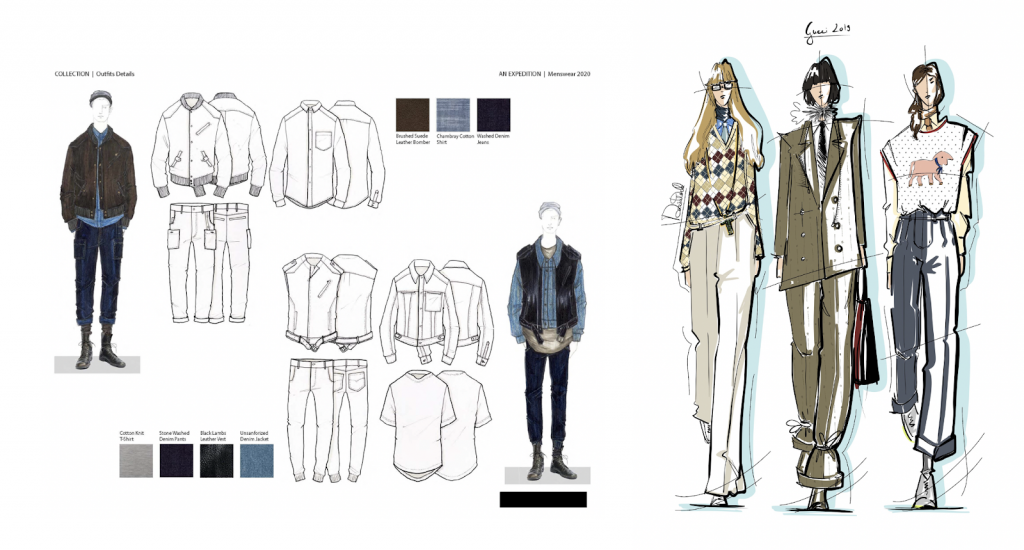
Becoming a freelance fashion designer offers flexibility and creative freedom, but it requires building skills, a strong portfolio, and business acumen. Research suggests that with dedication to education, networking, and niche specialization, aspiring designers can establish sustainable careers, though success often depends on market trends and client relationships.
Key Points:
- Education and Skills Development: Start with foundational knowledge in fashion; a degree or courses can help, but practical skills like sketching and software proficiency are essential.
- Portfolio Building: Create a focused portfolio showcasing 3-4 strong projects to attract clients quickly.
- Niche and Branding: Specialize in areas like sustainable apparel or activewear to stand out and charge premium rates.
- Client Acquisition: Use platforms like Upwork, LinkedIn, and direct pitching; aim for consistent outreach to build a client base.
- Business Management: Set competitive pricing, network actively, and seek mentorship to avoid common pitfalls like undercharging or inconsistent income.
Essential Skills for Freelance Fashion Designers
To thrive, focus on a mix of creative and practical abilities. Artistic talent is key, but so are communication and business skills to manage client projects effectively. Common skills include:
- Drawing and digital design (e.g., Adobe Illustrator).
- Knowledge of fabrics, trends, and production processes.
- Business sense for pricing and negotiations.
- Strong communication for client interactions.
Building Your Portfolio
A professional portfolio is your primary tool for landing gigs. Include process details, not just final designs, and tailor it to your niche. Start with personal projects if needed, and opt for a simple PDF format for easy sharing.

An example of a clean, professional fashion design portfolio layout featuring sketches and color palettes.
Finding Clients and Pricing Services
Pitch directly to brands via email or LinkedIn, focusing on value. Price based on industry averages (e.g., $75-100/hour for specialized services) or value delivered. Platforms like Upwork can help beginners, but aim for long-term relationships to ensure steady work.
Tips for Long-Term Success
Stay updated on trends, attend fashion events, and seek mentors. Consistency in quality and follow-ups can lead to referrals and repeat business.
How to Become a Freelance Fashion Designer: Your No-BS Roadmap to Getting Started
The fashion industry is dynamic and competitive, with freelancers playing a crucial role in helping brands innovate without full-time commitments. As of 2025, the rise of sustainable and digital fashion has opened new opportunities, but challenges like inconsistent income and client acquisition persist. This comprehensive guide draws from expert insights to provide a roadmap, including steps, skills, tools, and strategies for aspiring freelance fashion designers. Whether you’re transitioning from a corporate role or starting fresh, focusing on niche expertise and proactive networking can help you build a thriving practice.
Understanding the Freelance Fashion Landscape
Freelance fashion designers often work remotely, offering services like collection design, tech packs, and sourcing to startups and established brands. The field allows for flexibility—many earn $5,000+ monthly once established—but requires self-motivation. Industry trends emphasize sustainability, digital tools, and quick turnaround, making adaptability key. Beginners should research market demands, such as activewear or eco-friendly lines, to align their skills accordingly.
Step 1: Build Foundational Knowledge and Education
Start by immersing yourself in the fashion world. Research industry history, trends, influential designers, garments, fabrics, and textures to gain confidence. While not mandatory, a bachelor’s degree in fashion design, merchandising, or visual arts (typically 4 years) provides structured learning in color theory, sewing, sketching, and digital tools. Alternatives include online courses from platforms like Skillshare or Coursera on Adobe Illustrator and pattern making.
If possible, complete an internship for hands-on experience and networking. Internships, found through college advisors or sites like LinkedIn, build resumes and connections. For those without formal education, self-taught paths via YouTube tutorials (e.g., channels like Nino Via) can suffice, but combine with practical projects.
Step 2: Develop Core Skills
Success hinges on a blend of creative, technical, and business skills. Essential ones include:
| Category | Skills | Why It Matters |
| Creative | Artistic ability, sense of style, sketching, trend forecasting | Forms the basis of design innovation and client appeal. |
| Technical | Adobe Illustrator for flats, pattern drafting, tech packs, 3D rendering | Enables precise production-ready work. |
| Business | Pricing, negotiation, client communication, project management | Ensures profitability and repeat business. |
| Other | Fabric sourcing, fittings, vendor correspondence | Supports end-to-end project delivery. |
Practice daily sketching and enroll in courses for feedback. Tools like CLO3D for digital prototyping can give an edge in remote work.

A typical freelance fashion designer workspace with mood boards, sketches, and digital tools for inspiration.
Step 3: Define Your Niche and Services
Specializing narrows competition and boosts earnings. Choose one service across categories (e.g., pattern making for women’s slow-fashion) or multiple for one category (e.g., full services for kidswear). Niches like sustainable, plus-size, or activewear align with trends and allow for authentic branding.
Offer services from these categories:
- Creative: Digital flats, mood boards, collection design, textile design.
- Technical: Tech sketches, packs, grading, pattern drafting.
- Sourcing: Fabrics, factories, negotiations.
- Consulting: Market analysis, sales strategy.
Research via fashion media and personal strengths to select your focus.
Step 4: Create a Standout Portfolio
Your portfolio should captivate in seconds. Feature 3-4 projects showing process (research, sketches, finals) tailored to clients. Use PDFs for customization; include personal projects with fictional brand names if starting out. Label clearly and highlight problem-solving.
Examples of effective portfolios:

Step 5: Find and Price Clients Strategically
Avoid job boards initially; pitch directly to brands via Instagram hashtags, trade show lists (e.g., Magic, Coterie), or LinkedIn. Craft personalized emails: Compliment the brand, explain value, include a CTA. Follow up persistently.
On platforms like Upwork, build a profile with your niche, portfolio, and skills. Bid on relevant jobs, starting with smaller ones to gain reviews. For pricing, use salary-drop method (e.g., $100k/year = $100/hour), industry averages, or value-based (e.g., $500-1,000 per tech pack). Offer introductory discounts for first projects.
Step 6: Network, Mentor, and Build Your Brand
Find a mentor – professor, manager, or industry contact – for guidance. Network via events, social media, and LinkedIn; stay connected for referrals. Define your signature style (e.g., accessories focus) to create a unique brand.
Use Instagram as a secondary portfolio, posting client-targeted content. Attend shows to socialize and learn.
Step 7: Manage Operations and Sourcing
Handle logistics like sourcing via platforms offering low MOQs and sustainability certifications. Keep fabric swatches and stay trend-aware. For consistency, deliver extras, meet deadlines, and ask for more work/referrals.
Potential Challenges and Solutions
Common issues include feast-or-famine cycles and design theft. Mitigate with contracts, diverse clients, and ethical sourcing. Recent tips from social media emphasize Upwork strategies and Illustrator tutorials for efficiency.
Real-World Examples and Resources
Designers like Alison Hoenes (pattern making) and Kate Knight (sweaters) scaled via niching. Free resources: Successful Fashion Designer’s podcasts, Upwork guides, and YouTube channels for pricing and client-finding.

By following these steps, you can transition into freelancing with confidence, adapting to industry shifts for long-term success.


AXECO AI Steering Wheel,Birthing Your Steering Wheel by AI Mr. AX.